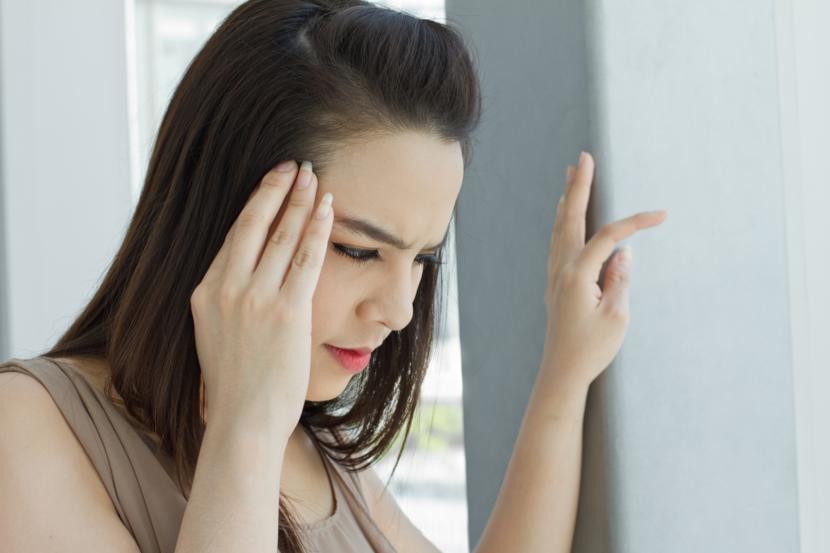Migraine Associated Vertigo (MAV)

What is Vertigo?
Vertigo is a sensation that is associated with dizziness or giddiness associated with certain movements. There are various factors that could contribute to vertigo in people. Migraine is just one of the many contributing factors that could result in vertigo.
What is a Migraine?
A migraine is a headache that is often misdiagnosed as a sinus headache due to lack of clarity on the definition of a migraine. Migraine headaches often occur with a feeling of nausea and dizziness.
MAV is a form of vertigo associated with a migraine. It is one of a group of conditions that covers many symptoms of dizziness, including Meniere’s disease and central vertigo. These conditions are diagnosed based on their signs and symptoms and not through medical tests or examinations. There are physicians that believe that migraine associated vertigo is a variant of a migraine, but MAV is still an emerging diagnosis for those who suffer from recurrent vertigo.
Causes of Migraine Associated Vertigo
There is still no known underlying cause that leads to migraines and the subsequent migraine associated vertigo. However, it is thought that a migraine reflects the action of a common gene in the population related to pain control and serotonin, a neurotransmitter.
Signs and symptoms of migraine associated vertigo
The main symptom of MAV is headaches that can last anywhere from a few hours to a few days. A headache can be moderate to severe, presenting itself as a throbbing pain, usually on one side of the head. A migraine is usually exacerbated by physical activity and accompanied by other symptoms, such as nausea, vomiting, and sensitivity to light.
In some instances, people experience unusual symptoms that affect vision, speech, and physical sensations. This occurs in about 10% of those who claim to experience blurred vision, blind spots, and flashing lights. Aura is also accompanied by other physical symptoms associated with Meniere’s disease. Symptoms, such as vertigo, tinnitus, and hearing loss, can be experienced for about an hour before the onset of a headache.
Motion sickness happens in around 30% to 50% of all patients who experience migraines, indicating a causative effect between the two conditions.
These symptoms can occur before a migraine hits, during a headache, or most commonly during the headache-free interval. A migraine occurs as a throbbing pain, extending for hours with intervals that are free of a headache, and vertigo-like symptoms usually manifest in these intervals. Because of this, most of those affected experience vertigo symptoms as the main symptoms, rather than the pain of a headache itself, which is why it is classified as a form of vertigo, rather than a form of a migraine headache.
Diagnosis of migraine associated vertigo
Because there are no tests that can be done to diagnose MAV, the diagnosis is done by an analysis of the patient’s medical records and the presence of signs and symptoms. Other physical tests are often recommended and routinely performed in order to eliminate other possible causes before the definitive diagnosis of MAV is confirmed.
Migraine associated vertigo treatment
Once diagnosed, the condition is treated as any other type of migraine headache, because a headache leads to the presence of other signs and symptoms. Treatment could be through eliminating food triggers, such as alcohol, chocolate, and cheese. Prophylactic treatment is necessary, as well. Beta-blockers, too, can be used if previous options are not successful. Medications such as Verapamil are useful because they have anticholinergic properties that control vertigo, even though they don’t eliminate the migraine headaches.
Coping with MAV
While the pain and discomfort associated with a condition like MAV is beyond the understanding of those who haven't gone through it, there isn't much that can be done as far as eradicating this condition is concerned. However, keeping one away from the triggers that cause the pain and discomfort goes a long way in dealing with this medical condition. Besides, there are also certain dietary changes and alternative remedies that people have found useful in treating this condition.
Can Diet Play a Role in Managing MAV?
Having an effective diet plan can help you manage your MAV condition. A proper diet can help in regulating the fluid in the body, creating a balance. The dietary regulations would include managing a few substances and therefore regulating the imbalances so created. Some of the dietary changes that can go a long way in effectively managing MAV include:
- Do not stay hungry or thirsty for too long when you are suffering from MAV. It is important to spread the food and liquid intake through the day and stick to this plan until you feel it begins to work for you.
- While it is easy to get tempted, it is best to avoid foods and drinks that contain large amounts of salt or sugar. Foods that include complicated carbs and sugars, like whole grains and legumes, are better foods to consume, since they spread in the body fluid more evenly as compared to simple sugars, and hence they make it easier to manage MAV. The intake of salt and sodium also has an impact on the fluid levels in the body and the way they are managed by the body. Speak to your treating healthcare practitioner to get the minimum and maximum levels appropriate for you, given your health condition, for both sugar and sodium levels.
- Drink enough liquids everyday. In case you are working out and expect a higher amount of fluid loss, or on a hot day, add fluid intake and make up for the fluid loss with extra doses.
- Foods and drinks containing caffeine could make your MAV condition worse, and hence caffeine is best avoided. Caffeine acts as a stimulant, which makes tinnitus worse. It also has certain diuretic properties, which could make one urinate more, causing higher loss of body fluids.
- Restrict your alcohol intake, as alcohol has a direct impact on the inner ear lining and can change the fluid levels in the ears. It could cause a fluid imbalance in the ears, thereby resulting in vertigo and migraine attacks.
- Avoid foods that are rich in amino acids, as they are known as possible migraine triggers, including foods that contain the amino acid tyramine. Examples of such foods include red wine, chicken liver, smoked meats, yogurt, chocolate, bananas, citrus fruits, figs, ripened cheeses (e.g., cheddar and Brie), and nuts.
NON-DIETARY SUBSTANCES
Apart from dietary changes, there may also be certain substances that could play havoc with the inner ear balance and cause symptoms, like vestibular disorders. Products like antacids, NSAIDs, Aspirin, Nicotine, and so on are known to be such substances that can trigger an imbalance in the fluid content of the inner ear and cause problems like MAV.
Alternative Treatments
There are a number of alternative treatments that have their proven efficacy in treating migraine associated vertigo. The good part about this form of treatment is that, with alternative treatment, one can experience relief without being overloaded with medications. Some of these successful forms of alternative therapy that have been effective in MAV include:
- Acupuncture: Acupuncture is a traditional method that helps in getting rid of migraine headaches and vertigo that often results from migraine. This technique works on certain pressure points, which help in easing out the pain and the occurrence of migraine attacks.
- Feverfew: It is a bushy herb that is full of aroma and flavor. Feverfew is commonly used in Chinese medicine to reduce the pain and occurrence of migraine attacks and also the time for which a migraine attack lasts. The herb helps in getting rid of the pain that occurs due to swelling in the blood vessels due to certain chemical reactions that occur in the body. It also helps in getting rid of sensations, like vomiting, dizziness, and other symptoms of vertigo. Usually, a recommended dosage of 250 mg per day can help in treating migraine associated vertigo.
- Butterbur: Butterbur is a short shrub that is found in marshy lands of Europe, Asia, and parts of North America. Butterbur is a popular treatment that brings about relief when it comes to migraine attacks and vertigo. The extract of this wonder herb is available in the form of pills that can help in treating migraine attacks. Compared to strong medicines and antibiotics, this natural herb is helpful in treating migraine pain without side effects.
- Peppermint: Peppermint essential oil is a natural remedy that is very useful in treating various conditions associated with pains, like those of migraine. Peppermint oil can be obtained as an essential oil, as well as in the form of pills.
- Ginger: The ginger plant is used in various forms of medications and for treating various ailments, including headaches and symptoms of vertigo. Ginger is one of the best forms of treatment for conditions like MAV, as it helps in reducing the inflammation that results in the migraine pain.














